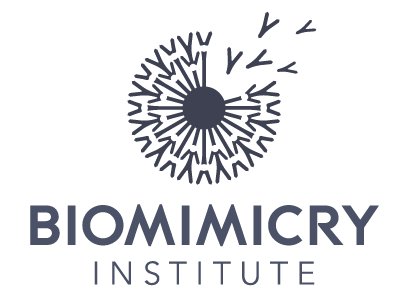Ray C. Anderson Foundation and Biomimicry Institute Announce Biomimicry Design Challenge and “Ray of Hope” $100,000 Prize
Press Release — September 22, 2014
(New York – September 22, 2014) For years, the Biomimicry Institute and founder Janine Benyus have asked, “How can nature-inspired design solve the world’s most pressing problems?” With today’s announcement at the 2014 Clinton Global Initiative Annual Meeting, the Biomimicry Institute and partner Ray C. Anderson Foundation upped the ante by asking, “How can we accelerate the commercial viability of biomimetic solutions to our greatest challenges?” In response, the two nonprofits jointly announced their CGI Commitment to Action, the new Biomimicry Design Challenge and the creation of a $100,000 Ray C. Anderson “Ray of Hope” Prize designed to bring commercially viable solutions from the design lab to the market.
“Seeding and accelerating nature-inspired solutions to global challenges is the aim of our new partnership,” said John Lanier, director of the Ray C. Anderson Foundation, announcing that the first two years of the challenge will focus on solutions to global food security. Interface Founder Ray Anderson, who served as co-chair of the Presidential Council on Sustainable Development from 1997-1999 under President Clinton, was famously inspired by biomimicry. His carpet company was one of the first to invite biologist Janine Benyus to the design table, resulting in the company’s number one selling carpet tile product, Entropy. Designed to mimic a forest floor, Entropy revolutionized carpet tile manufacturing and installation, resulting in little to no waste.
The Biomimicry Design Challenge aims to accelerate market-ready, scalable solutions with a unique approach: “In Year One, we will seed biomimetic design concepts with awards of up to $10,000 to approximately five entrants,” explained Beth Rattner, executive director of the Biomimicry Institute. “Awardees will be invited to return to demonstrate prototype solutions and compete for the $100,000 “Ray of Hope” prize to scale the solution and bring it to market. At the same time, another five design concepts will be seeded, and the cycle will begin anew.”
“I have to believe that my grandfather would have believed this new challenge is just, as he would say, ‘so right and so smart,’” said Lanier. “With our support, the best ideas will be the seeds of new businesses that will carry forward Ray’s vision – that with nature as a guide, business and industry can change the world.”
The new Biomimicry Design Challenge, open to students and professionals alike, will launch in January 2015. In August 2015, up to five solutions will be selected to receive up to $10,000 and an invitation to return in May 2016 with a commercially-viable prototype that is designed to be scalable. The first two years of the challenge will be dedicated to the pursuit of biomimetic solutions to global food security challenges.
“Roughly one-third of food produced for human consumption is lost or wasted globally, meaning that one-third of global greenhouse gas (GHG) emissions associated with food production have been emitted in vain,” said Rattner. “Even when food is available, overall nutrition is declining due in large part to climate change and industrial farming methods.
“On the other hand, the natural world offers a library of good ideas. Seeds have provided lessons on how to grow fruit trees in arid areas, wetlands have taught us how to recycle food processing water, honeybees are informing how we store harvested food, camels are inspiring better irrigation strategies, and a deep understanding of prairies is leading to a whole new way of producing food. We believe that nature has the key to solving our world’s food security issues, we just need to unlock the solutions.”
For more information, visit: challenge.biomimicry.org
About the Biomimicry Institute
The Biomimicry Institute is a 501(c)(3) not-for-profit organization that empowers people to seek nature-inspired solutions for a healthy planet.http://www.biomimicry.org
About Ray C. Anderson Foundation
The Ray C. Anderson Foundation is a 501(c)(3) not-for-profit organization that seeks to promote a sustainable society by supporting and funding educational and project-based initiatives that advance knowledge and innovation in sustainability. http://www.raycandersonfoundation.org/rayofhopeprize
About the Clinton Global Initiative
Established in 2005 by President Bill Clinton, the Clinton Global Initiative (CGI), an initiative of the Clinton Foundation, convenes global leaders to create and implement solutions to the world’s most pressing challenges. CGI Annual Meetings have brought together more than 180 heads of state, 20 Nobel Prize laureates, and hundreds of leading CEOs, heads of foundations and NGOs, major philanthropists, and members of the media. To date, members of the CGI community have made more than 2,900 commitments, which are already improving the lives of more than 430 million people in over 180 countries.
CGI also convenes CGI America, a meeting focused on collaborative solutions to economic recovery in the United States, and CGI University (CGI U), which brings together undergraduate and graduate students to address pressing challenges in their community or around the world. For more information, visitwww.clintonglobalinitiative.org and follow us on Twitter @ClintonGlobaland Facebook at facebook.com/clintonglobalinitiative.
Sources
Unless otherwise noted, images are either owned by Biomimicry Institute or are courtesy of Shutterstock.


